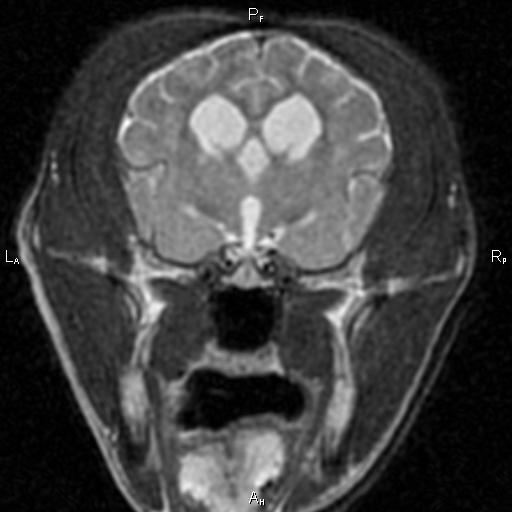Myasthenia gravis (MG) is a neuromuscular condition in people and animals that causes a weakness of the skeletal muscles. Often, this weakness is exercise-induced and with short periods of rest the animals can recover a modicum of strength and movement. The disease is considered a 'junctionopathy' because the synapse, or junction, of the nerve and muscle is the part of the pathway that is affected. In particular, it is the receptor on the muscle side of the junction that is unable to function properly. Basically, the muscle can't 'hear' the nerve talking to it.
MG can be an acquired disease or present at birth, congenital. Congenital MG is uncommon in veterinary medicine. We typically see the acquired form, so that's what we'll focus on in these blogs.
A radiograph (X-ray) of a dog with generalized megaesophagus. The blue arrows show the outline of the dilated esophagus.
Acquired MG is recognized in 3 forms in veterinary medicine. There is a generalized form that leads to the exercise induced weakness, a focal form that often affects the muscles of the esophagus, and a fulminant form that causes profound weakness of the respiratory muscles and can lead to death without life support and immediate therapy. While patients often respond well to medical therapy and their strength usually improves dramatically, many veterinarians consider involvement of the esophagus to be a bad sign, even when it's only the focal form of the disorder. That's because changes in the esophagus lead to regurgitation and might cause aspiration pneumonia. Aspiration pneumonia is difficult and often very expensive to treat!
This cartoon depicts the antibody blocking the receptor that leads to the muscle weakness
In terms of how the disease comes to be, it is an autoimmune disorder. For some reason we do not understand, the patient's own body begins making antibodies against the muscle receptor. This receptor is called the Nicotinic Acetylcholine Receptor. The antibodies then prevent the chemical signal from the nerve (acetylcholine) from being able to bind to the receptor and transmit the signal from the nerve to cause the muscle to contract. At the level of the junction, or synapse, it becomes a competition between the antibody and the acetylcholine to inactivate or activate the receptor respectively.
In the next blog post, we'll discuss some of the ways we diagnose this disease, and we'll follow that one up with a discussion on therapy and resolution...





















